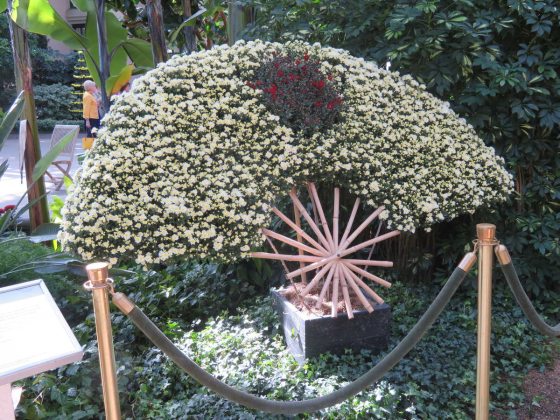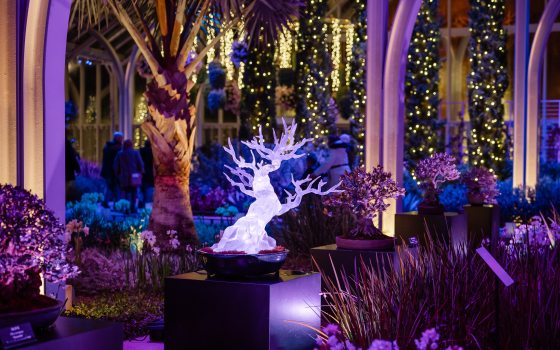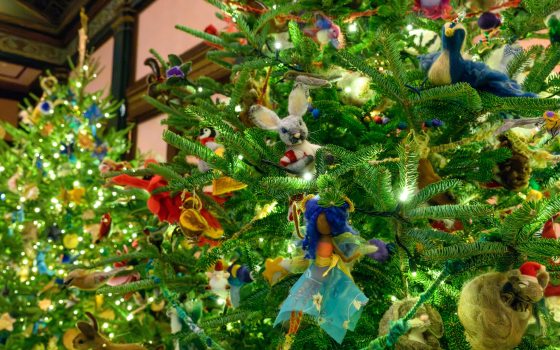At Longwood Gardens, we start planning for our Chrysanthemum Festival more than a year ahead of our display. At our July 2017 planning meeting for this year’s display, Longwood’s Associate Director, Display Design Jim Sutton brought with him a photo of a mum grown into the shape of a Japanese handheld fan. The photo had been taken during a Longwood staff visit to Sorakuen, a public garden in Kobe City, Japan, in 2015. Jim suggested we try to grow one of our own here at Longwood, and our work began.
As the Senior Grower in charge of the cascade chrysanthemums for Chrysanthemum Festival, I first went to work figuring out how to get the plants to achieve the fan form from a horticultural standpoint. I also worked with Senior Mechanic and Fabricator Dave Thomson, who looks at things from a hardware standpoint, to build a metal frame on which to grow the plants. Once he had built our stainless steel frame in January 2018, I then covered the frame with chicken wire, on which we would train our chrysanthemums.
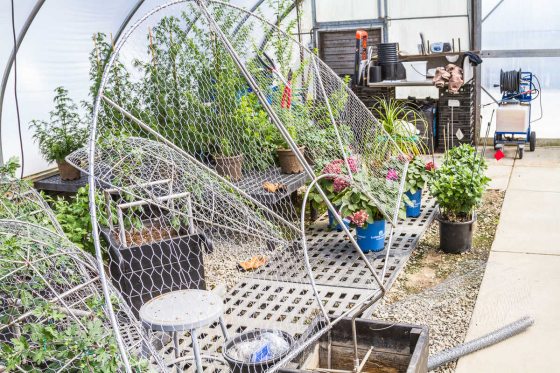
The goal of this new frame was to cover the field of the fan in white and include a red dot in the center to symbolize the Japanese flag, in order to honor the origin of our cascade chrysanthemum growing techniques and the place where these fan forms are typically grown for mum exhibitions. We chose a cultivar that is pure white, ‘Yamanoha-no-Kumo’, for the fan’s field. It is a strong grower with the ability to cover a vast area (the fan measures 8 feet across). For the red dot in the center, we used the cultivar ‘Kurume’. Because of the large area needed to be covered in white, I used three ‘Yamanoha-no-Kumo’ plants and one ‘Kurume’. One challenge that came with growing this form was making sure that the red and white cultivars be kept separate during the growing season. One red streak into the white field would ruin the effect. To achieve this separation, I tied a circle of green electrical wire onto the chicken wire frame to delineate where the red dot should be placed.
The plants were started by vegetative cuttings on December 15, 2017. Cuttings went under mist for two weeks until they developed roots, at which point we were able to pot them into 5-inch pots. By late February these plants were established enough that I could put them into their final container, a 16-inch wooden box.
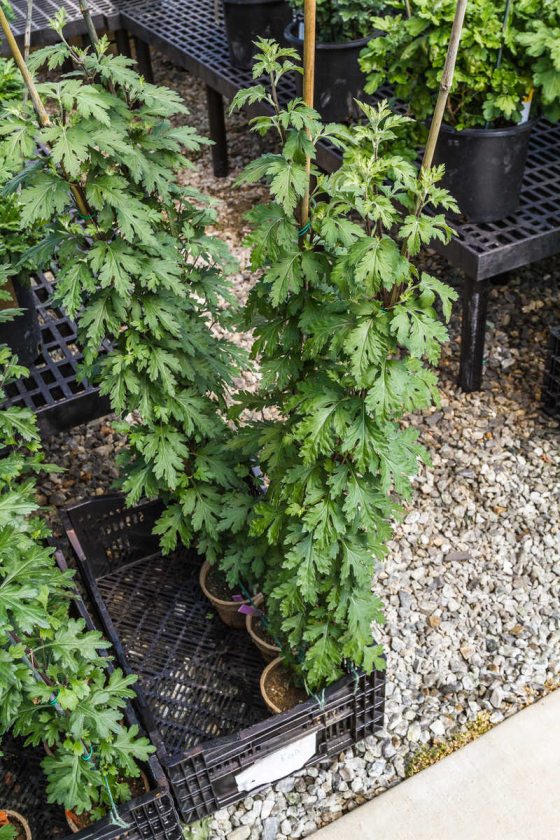
During the winter months, the plants were grown inside a 60-degree greenhouse. My goal during that time was to get the main stems grown to their final length for each form. Indoors I can use little tricks to make the plants grow faster or slower when needed. For example, I can run a positive day/night differential, or DIF, (when daytime temperatures are warmer than nighttime temperatures) to stretch the plants. DIF is a horticulture technique involving temperature control and plant growth. We see the greatest results from running a DIF in the first two to three hours in the morning, so we set the thermostat 10 degrees warmer for two hours starting at dawn from January through March, to help the cascades grow.
Once early May arrived and the last frost was over, we moved the plants outdoors. At that point, we had no control over the environment, and my goal was to cover the surface area of the metal structures for each form.

To cover the surface area, over the first half of the summer my crew and I pinched the growing tip of every stem every two or three weeks and tied them flat to the chicken wire. With each pinch we encouraged more lateral branching, which created more mass to fill the open spaces of the frame.
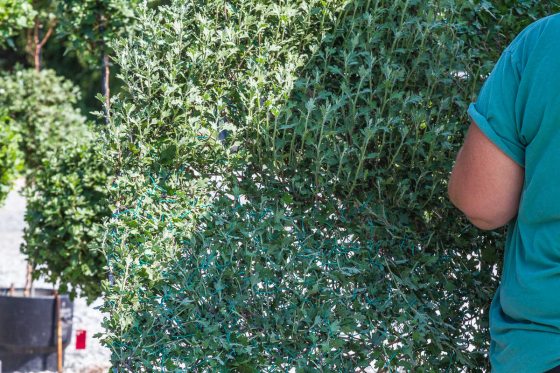
By mid-July, the frame had filled in nicely and we moved on to shearing the plant every couple of weeks to bulk up the plant.
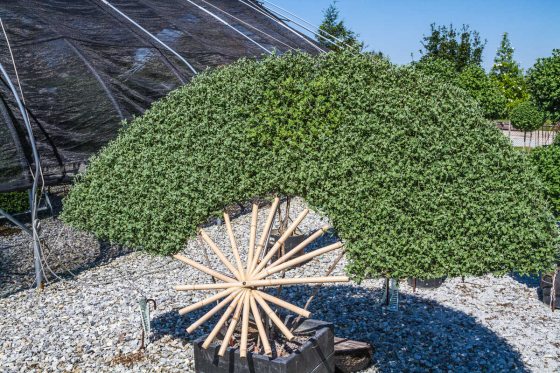
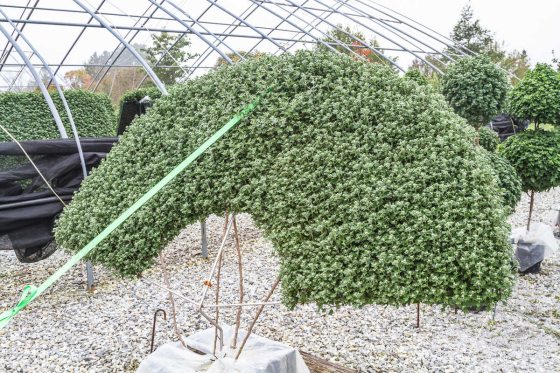
The final shear for our mums occurred the first week of September, allowing the plants to come into bloom just in time for the opening of Chrysanthemum Festival.
